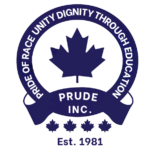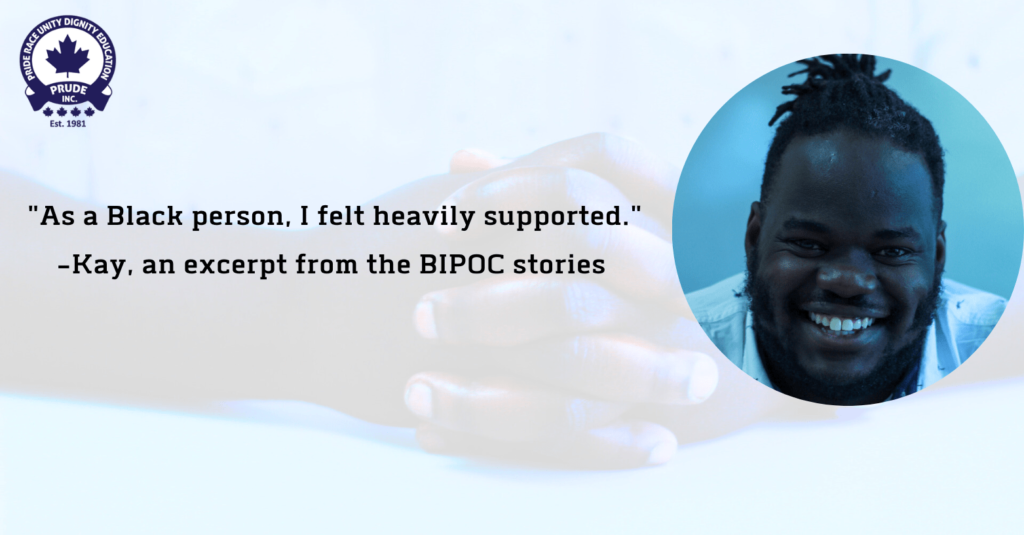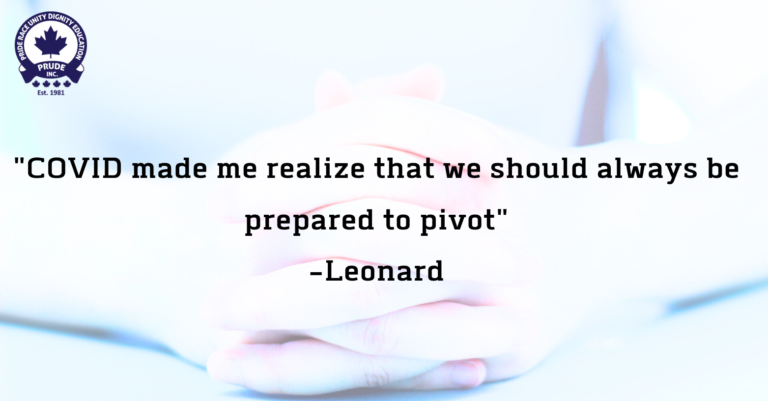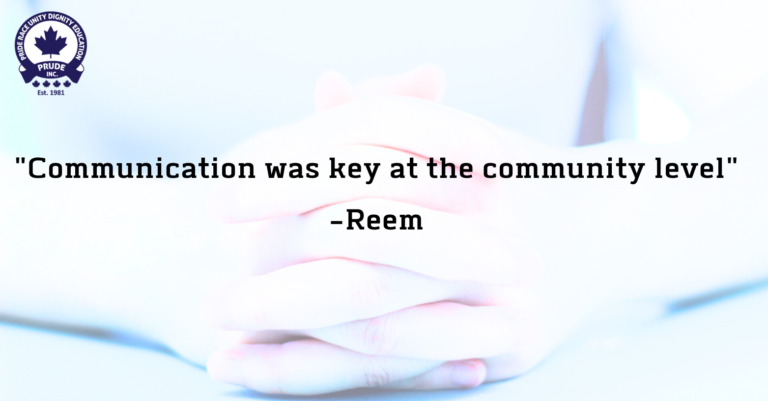BIPOC stands for Black, Indigenous, and People of Color. Our project coordinator, Megan Paterson are interested in how members of the BIPOC community have been uniquely affected by the events of the past year, particularly pertaining to COVID and the Black Lives Matter movement. Check out her interview with Kay Kanyandula.
Meet Kay: a newcomer, family enhancement crisis worker at the YMCA, and advocate. Stumbling across this project by a happy accident, Kay was eager to share what he had discovered about identity and its complexity during our discussion about intersectionality. We explored how Kay’s experiences over the past year have been influenced by his identities as a newcomer and as a Black man. Kay appeals to finding positivity within the Black experience, calling for Black success stories, the optimistic sides of history, and an openness to tackle history’s grave side. Kay and I discussed the importance of identity, learning from past and present experiences, and crucial, uncomfortable, but necessary conversations.
Black Lives Matter:
Arising from the perfect storm of tension and isolation, the Black Lives Matter movement captured the world. Kay Kanyandula notes that the movement was very timely. “People had nowhere to go, they were not busy” he says, “there were none of the usual things that tend to distract us”. Kay notes that isolation associated with the pandemic made it possible for Black Lives Matter to receive the attention that it needed. It sparked conversation across barriers like city, country, and race, putting “the ball in the other side of the court”. The initiation of a global movement, forced white people to do the work, to learn about allyship, and to amplify Black voices. “As a Black person, I felt heavily supported because people started talking about what was really going on” Kay says when asked about his general support systems over the past year. Not only did the Black Lives Matter movement prompt education on allyship, the Black experience, and anti-racism, but it called on all people of colour to discuss their experiences with racism, prejudice, and police brutality. Kay recollects conversations with Indigenous people and the importance of comparing their experiences and supporting each other. He draws connections between Black and Indigenous experiences with police, the impacts of colonization, and institutionalized racism.
Kay is an avid advocate for therapy. He calls for those who are grieving or feeling overwhelmed by the events of the past year and a half to pursue help, especially that of a Black therapist.
“It’s great to see a therapist but it’s even better to see an African or Black Canadian therapist, who will understand the cultural bearing of certain things, who understands the stories we have. As much as I would love to see a therapist who happens to be white, they’re not going to know what it’s like to go through certain things because Canada as a society is very covert. Racism and its continuation is very difficult to point out. You have to be a victim and then you have to explain why you’re the victim of certain things. Having a therapist poke at these things without necessarily leading to them is very important”
Kay recalls finding support through his partner throughout the Black Lives Matter movement and the pandemic. Because the pandemic had stopped everything, Kay found himself overwhelmed by social media. “There was never a moment on Instagram, or on Facebook, or on TV that wasn’t talking about another Black body being taken away” he says, recalling social media’s overwhelming response to the Black Lives Matter movement. “I’m very lucky that my partner would tell me to stop, to switch it off, to go for a walk, to listen to a podcast, to meditate, to do something else other than just this constant barrage of it all”. Kay advocates for a healthy distance from news and social media, arguing that creating space allows for a healthier approach to advocacy. He maintains that there is a difference between engaging with and drowning in the news, and advocates for others to determine that division for themselves.
COVID:
As a newcomer with family hailing from Tanzania, Kay has a unique experience with COVID. While safe in Saint John where cases were kept under control, the majority of his family remained in Tanzania with a COVID-denying government. Kay undertook the difficult journey of not only having a family member fall sick with COVID, but also having been further separated from his family due to COVID restrictions. Kay is eager to see how Tanzania’s new president will handle the pandemic. He is hopeful to see the world continue to overcome COVID’s challenges as it continues to heal.
COVID has been an incredible eye opener to the fragility of the stability we have become accustomed to for Kay, showing how easily we can lose what we take for granted. “For me to see people lose jobs and not know what was going to happen next, and to know how over-reliant we’ve become on this level of comfort was really heartbreaking” he says during our discussion about COVID. But, simultaneously, COVID was also an important contributor to the Black Lives Matter movement. Because COVID involved such an immense period of isolation, it constituted a period of reflection, allowing for people to sit and consider the systems in place and how they were actively oppressing people of colour.
For Kay, the Black Lives Matter movement sparked conversations across communities. “It was really interesting to talk to my Black friends, because, as you know, no community is a monolith”. Kay mentions how different Black cultural groups were affected uniquely by Black Lives Matter, highlighting the importance of “having different perspectives from various groups of Black people like African American, Black Canadian, or African”, emphasizing the importance of intersectionality in human rights movements. Kay describes the importance of seeing how different movements in support of Black lives are interconnected. “We all have different stories or different struggles, be it colonialism or straight up police brutality” Kay recalls, emphasizing solidarity within the different movements. “When BLM was happening, End SARS was also happening in Nigeria, and Zimbabwe was also talking a lot about what was happening with their government. It was interesting to see how all these things were tied together, how everything was shared”. Because of the relationships that blossomed from shared involvement in human rights movements, it opened the door for discussions around trauma and the opportunity to invest time and energy into others.




